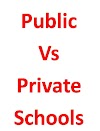Background
Handshake for Business Communication
Before we deal the major contents of handshake lets know what communication is.
Communication refers to the exchange and sharing of information, ideas, feelings and opinions form one person to another.
There are various official purposes of communication like running a business, managing an organization, conducting the formal dealings of a charitable organization etc are well managed and conducted smoothly.
Business communication is identified by formality which often lacks in personal and social communication. It uses the formal vocabularies and grammar in comparison to personal and social communication.
Another beautiful way to distinguish and compare business communication with personal and social communication is in terms of sender and receiver. The family members and relatives are the participants in personal and social communication but the officials and professionals are in the role of sender and receiver in business communication.
Communication themes are mainly practiced for social functions of language. They are also called the basic functions of language. Those themes and functions are as follows.
There is an introductory unit which deals with the aspects such as:
Let's start it from request.
In the hospitality sectors requesting is one of the important aspects. We have different forms of requesting. One has to understand the context and meaning of those differences.
Some of the common formula for requesting or asking for a help.
Sorry, excuse me, pardon me etc.
Formulas for Requesting
Formulas for requesting are many. Just see some examples. Can you walk more slowly, please?
I don't understand.
Could you do it again?
How do you say it in English?
How do you spell/pronounce that?
Note: Can, Could and Do are used for asking for help.
Would like, quantity and what make size etc are used for asking for request.
Some examples
Conversations-1
Deep: Would you like a coffee?
Lee: A cold coffee, please.
Deep: Milk or light?
Lee: Milk, Please. But not frozen cold.
Conversation-2
Rita: Can I help you?
Gita: Please two of these… thank you…and some of that, too.
Rita: Anything else?
Gita: Yes, one of those, and some of these. Thanks.
Requests can be of different types.
For example
Not Polite: Give me a tea. I want Momo.
Neutral: Tea, Please. I'd like a tea, please. Can I have a tea, please?
More polite
Could I have a tea, please?
May I have a coffee, please?
Very Polite
I wonder if I could have a tea, please.
Sometimes intonation (pitch of voice) is also function in the degree of tone. For example a polite expression can be less polite or not polite expression can be polite with the different tone of voice.
 |
| Requesting |
For more practice make some sample conversation as a command, in a neutral way and very polite.
Image how
Requesting for others
In our everyday and professional life, one has to make request for others in some conditions.
He'd like…. And it's for are the common expression for requesting for others.
Look at the following examples
Waiter: What should I bring for you Sir?
Man: Sure what is there special in starter?
Waiter: we have popcorns, cucumber salad, and some hot and cold drinks.
Man: So, plz popcorns.
Waiter: And for the main course? Are you ready to order?
Man: Yes, sure. Bring me a butter chicken with bread. And she would like the chicken fry rice. And she also likes green salad.
Waiter: Okay thanks just few minutes.
Cultural Comparison in Communication
Cultural Comparison in use of language is culture specific. There are many functions of language guided by the cultural aspects. It is more applicable in greetings, requesting, welcoming, questioning, warning etc.
For example
The British often say please and thank you in comparison to Americans. It happens in purchasing the things at supermarket also. A British may say thank you two or more than two times but American may say it only one time.
Another interesting trend is an American often replies you're welcome after thank you but a British may reply thank you or sometimes does not reply.
The intonation of some Scandinavian countries looks like the English command.
In most of the countries of Asia, people bow their heads or looks away while requesting the things.
References
Timilsena (2021) Business Communication Platform










0 Comments